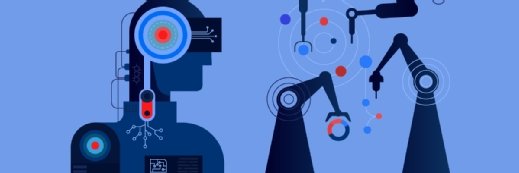
Getty Images
Data Visualization Tool Allows Users to Track COVID-19 Spread
Using GPS data, the data visualization tool can provide users with the latest information on COVID-19 case locations locally.
Researchers from Southern Illinois University (SIU) have developed a data visualization tool that leverages GPS information to show users the locations of known COVID-19 cases, while protecting the identities of individuals diagnosed or exposed to the virus.
For more coronavirus updates, visit our resource page, updated twice daily by Xtelligent Healthcare Media.
The Virus Contact Map (VCM) could provide an important tool for avoiding exposure and tracking the virus’ spread. The tool could offer public health officials the ability to see how COVID-19 progresses over time locally and regionally, and enable leaders to identify areas as potential hot spots.
The team is seeking to combine smartphone GPS history collected by Google with local health department data on COVID-19 cases.
“This is by far the most critical requirement as without it, the utility for general public will be greatly reduced,” said Koushik Sinha, assistant professor in the School of Computing at SIU. “The tool will provide functionalities that we believe will be useful to both private individuals as well as health officials.”
Researchers also have plans to integrate other data sources into the tool, including locations provided by WiFi access points. Protecting individual privacy is top of mind as well: No names or other identifying information will be associated with location and diagnosis data. Additionally, users will have the option to delete certain information from the dataset they provide in order to use the tool.
“There are multiple techniques that we will implement to ensure privacy,” Sinha said. “Our goal is to make the tool HIPAA -compliant.”
The tool will offer three ways to visualize the virus’ spread and individual locations. First, using a slide bar to control the time frame, users can see the number of COVID-19 cases over time, including fatalities. This could allow county health officials to visualize how the virus has progressed over time not just in their own counties, but in neighboring areas.
“If I were to see my county has a considerable number of infections while neighboring counties do not, then I might feel safer doing my grocery shopping there rather than my home county,” Sinha said.
A second visualization option would provide a color-coded map of all locations visited by individuals known to have COVID-19 during the last 48 hours. The visualization would use a function that combines the number of COVID-19 cases to visit the location, as well as how recently they did so before color-coding it.
This feature could help individuals reduce their risk of exposure, researchers said.
“For example, an individual might decide to avoid a store in a local county that has had a significant footfall of COVID-19 positive people in the recent past, and instead shop somewhere with a lighter footfall,” Sinha said.
“Another example could be, say in New York City, a person could use this information to determine if it would currently be safe to go for a walk or jog in Central Park as opposed to a Queens neighborhood.”
For the third visualization, users can upload their Google timeline history to the website, where an analytics algorithm would generate a list of locations where they may have been exposed to a COVID-19 case in the recent past. The information would be presented again in a color-coded map with each visited location, classified as either high, moderate, or low risk of exposure.
“Providing a risk assessment of every contact and visited location would be a very useful feature to not only individuals who want to assess their chances of infection, but also to health officials in allocating resources for managing the COVID-19 crisis,” Sinha said.
“As more users opt in and more data is available to the analytics engine for modeling risk, the accuracy of the risk assessment engine will improve.”
Users can also combine certain visualizations for further analysis, gaining more insight of the virus’s reach and how to best minimize personal risk.
“For example, let’s say I first use a visualization that determines a certain grocery store is a safer place to go shopping on a certain day. Unfortunately, I unknowingly happen to come in close proximity with an asymptomatic COVID-19 person who later tests positive. Then this feature would allow me to determine if I was exposed to any such individual,” Sinha said.
“The visualization of this map also allows users to control how far back in time and what sort of proximity distance would she like to use for generating the contact tracing map.”
When developing the tool, researchers aimed to keep individuals’ privacy a top priority. The tool’s database requires only an individual’s GPS history, as well as the time at which they tested positive for the virus. No other identifying information is needed. Additionally, all location data is stored and displayed completely anonymously.
“Addressing privacy concerns has been at the core of our innovation,” Sinha said. “We have taken a very different approach than that being taken by most of the proposed contact tracing apps being developed around the world, some of which have already begun to raise a lot of concerns about privacy.”
The researchers ultimately hope to create a mobile-friendly version of the VCM tool that will serve the needs of health officials and the general population.
“We need support from the general public in contributing their data to this tool for the greater good,” Sinha said. “As more people use it, the better will become our ability to provide accurate contact tracing and risk assessment results.”





